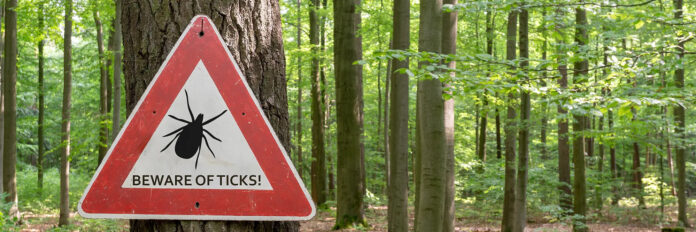A clever and effective public service message I recently saw advises “don’t get ticked” when outdoors, and with good reason. Tick-borne diseases and illnesses have been on the rise nationally and in Alabama, and several tick species found in the state carry illness-causing bacteria.
Alabama Senate Joint Resolution 85 proclaims June 2024 as Tick-borne Disease and Illness Awareness Month in Alabama. The resolution states that these illnesses are often misdiagnosed because the symptoms of Lyme disease and other tick-borne illnesses are similar to flu and cold symptoms. Researchers have also identified emerging threats from ticks including illnesses in humans which were previously believed only to infect animals. The resolution states that the best prevention is through encouraging awareness of the symptoms and variety of diseases and illnesses that ticks carry.
According to the Centers for Disease Control and Prevention (CDC), the most common symptoms of tick-related illnesses include the following:
• Fever/chills. All tick-borne diseases can cause fever.
• Aches and pains. tick-borne diseases can cause headache, fatigue and muscle aches. People with Lyme disease may also have joint pain.
• Rash. Lyme disease, Southern tick-associated rash illness (STARI), Rocky Mountain spotted fever (RMSF), ehrlichiosis and tularemia can cause distinctive rashes.
To prevent tick bites on people, the CDC recommends:
Before you go outdoors
• Know where to expect ticks. Ticks live in grassy, brushy or wooded areas, or even on animals. Spending time outside walking your dog, camping, gardening or hunting could bring you in close contact with ticks. Many people get ticks in their own yard or neighborhood.
• Treat clothing and gear with products containing 0.5% permethrin. Permethrin can be used to treat boots, clothing and camping gear and remain protective through several washings. Alternatively, you can buy permethrin-treated clothing and gear.
• Use Environmental Protection Agency (EPA)-registered insect repellents containing DEET, picaridin, IR3535, Oil of Lemon Eucalyptus (OLE), para-menthane-diol (PMD) or 2-undecanone. EPA’s helpful search tool can help you find the product that best suits your needs. Always follow product instructions. Do not use products containing OLE or PMD on children under 3 years old.
• Avoid contact with ticks. Avoid wooded and brushy areas with high grass and leaf litter. Walk in the center of trails.
After you come indoors
• Check your clothing for ticks. Ticks may be carried into the house on clothing. Any ticks that are found should be removed. Tumble dry clothes in a dryer on high heat for 10 minutes to kill ticks on dry clothing after you come indoors. If the clothes are damp, additional time may be needed. If the clothes require washing first, hot water is recommended. Cold and medium temperature water will not kill ticks.
• Examine gear and pets. Ticks can ride into the home on clothing and pets, then attach to a person later, so carefully examine pets, coats and daypacks.
• Shower soon after being outdoors. Showering within two hours of coming indoors has been shown to reduce your risk of getting Lyme disease and may be effective in reducing the risk of other tick-borne diseases. Showering may help wash off unattached ticks and it is a good opportunity to do a tick check.
• Check your body for ticks after being outdoors. Conduct a full body check upon return from potentially tick-infested areas, including your own backyard. Use a hand-held or full-length mirror to view all parts of your body. Check these parts of your body and your child’s body for ticks:
o Under the arms
o In and around the ears
o Inside belly button
o Back of the knees
o In and around the hair
o Between the legs
o Around the waist
If you find a tick attached to your skin, remove the tick as soon as possible.
• There are several tick removal devices on the market, but a plain set of fine-tipped tweezers works very well.
• If you develop a rash or fever within several days to weeks after removing a tick, see your healthcare provider.
The CDC has developed the Tick Bite Bot (www.cdc.gov/ticks/communication-resources/tick-bite-bot-1.html), which is an interactive tool to assist individuals on removing attached ticks and determining when to seek healthcare, if appropriate, after a tick bite.
Don’t avoid the outdoors. By being aware of the necessary precautions and actions needed, you and your family can make the most of the warm June days. Additional information is available at https://www.alabamapublichealth.gov/tick/index.html.
Scott Harris, M.D., M.P.H.
Alabama State Health Officer




























